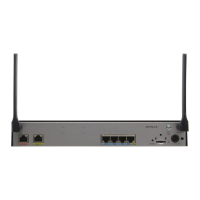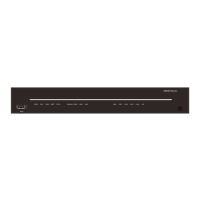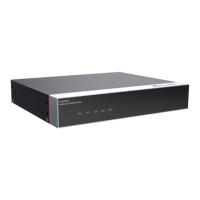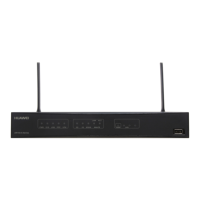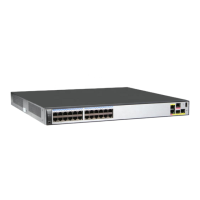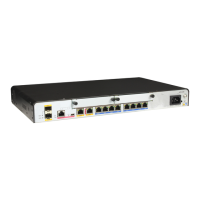7.1 STP/RSTP Overview
STP/RSTP is used to block redundant links on Layer 2 networks and trim a network into a loop-
free tree topology.
Background
Network designers tend to deploy multiple physical links between two devices (one link is the
master and the others are backups) to fulfill network redundancy requirements. Loops are bound
to occur on such types of complex networks.
Loops will cause broadcast storms, thereby exhausting network resources and paralyzing the
network. Loops also cause MAC address flapping that damages MAC address entries.
Devices can run STP to discover loops on the network by exchanging information with each
other, and trim the ring topology into a loop-free tree topology by blocking an interface. These
capabilities help prevent replication and circular propagation of packets on the network which
in turn helps avoid degradation of switching device performance.
With all its merits, STP is not able to converge network topologies quickly. In 2001, the IEEE
published document 802.1w, which introduces an evolution in the Spanning Tree Protocol:
Rapid Spanning Tree Protocol (RSTP). Although based on the same principles, RSTP was
developed for rapid convergence and far outperforms STP.
Concepts
l Root bridge
A tree topology must have a root.
There is only one root bridge on the entire STP/RSTP-capable network. The root bridge is
the logical center but is not necessarily the physical center of the entire network. Another
switching device can serve as the root bridge following a change in the network topology.
l Bridge ID
As defined in IEEE 802.1D, a bridge ID (BID) is composed of a 2-byte bridge priority and
a 6-byte bridge MAC address.
On an STP-capable network, the device with the smallest BID is selected as the root bridge.
l Port ID
A 16-bit port ID (PID) is composed of a 4-bit port priority and a 12-bit port number.
PIDs are used to select a designated port. When the root path costs and the sender BIDs of
two ports are the same, the port with a smaller PID is selected as the designated port. As
shown in Figure 7-1, the root path costs and sender BIDs of port A and port B on S2 are
the same. Port A has a smaller PID, and is selected as the designated port.
l Path cost
A path cost is port-specific and is used by STP/RSTP to select a link. STP/RSTP calculates
the path cost to select robust links and blocks redundant links to trim the network into a
loop-free tree topology.
On an STP/RSTP-capable network, the accumulative cost of the path from a certain port
to the root bridge is the sum of the costs of the segment paths into which the path is separated
by the ports on the transit bridges.
Huawei AR3200 Series Enterprise Routers
Configuration Guide - LAN 7 STP/RSTP Configuration
Issue 02 (2012-03-30) Huawei Proprietary and Confidential
Copyright © Huawei Technologies Co., Ltd.
182

